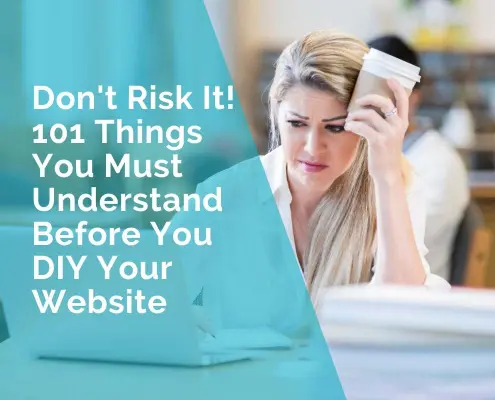13 Elements to Consider for Building a Strong eCommerce Business
The eCommerce sphere has grown tremendously in the past decade, taking the world of retail by storm. Nowadays, having a functional online store is the most efficient way to stand out from the competitors, and stay connected with customers. However, as the market continues to evolve, more and more companies are implementing different strategies and techniques, constantly racing to stay ahead. Whether you operate an existing online business or you are looking to launch a new eCommerce store, being aware of the following 13 components will help turn your ideas into a strong and thriving eCommerce operation.
1. Detailed Product Information
Online shoppers have no option of seeing and touching the products they’re interested in, so their purchasing decisions are based entirely on the information listed on product pages. That is why it is extremely important to publish clear and correct information about each and every item you sell.
Details like weight, height, size or any particular technical information are essential components of an informative product page. Also, make sure you include keyword research in your content strategy so the pages can rank higher on different search engines.
On top of that, have in mind that the eCommerce industry is heavily impacted by product reviews. In fact, 43% of online shoppers use them to read about other people’s experiences before they make a purchase. All the leading eCommerce businesses use product reviews to boost sales, and that is something you should consider, too.
2. UX and Website Navigation
In order to create an online store with an amazing user experience, you need to understand all the ways your clients will be interacting with it and address all their needs by offering simple and intuitive navigation.
Once you manage to set up the interface, you will prolong the average session time and increase the level of customer interaction. However, the user experience strategy needs to work flawlessly with website content which should always be clear so the clients can get all the necessary information in a matter of seconds.
Facing confusing content and complex navigation are the two things that usually force users to abandon the store. By improving user experience and streamlining the purchase process, businesses can significantly reduce cart abandonment and enhance conversions.
3. Search Engine Optimization
Since the eCommerce industry is constantly growing and new businesses enter the market on a daily basis, staying on top of current SEO strategies is more important than ever.
In order to stay competitive in your niche, it is best to consult with a reputable SEO expert or company who can help you set up an effective foundation that will keep your efforts relevant in the long run.
When you give proper structure to your online store, you will make it easier for Google and other search engines to recognize your business and give it the best possible ranking.
4. Marketing Efforts
Marketing is one of the key factors that either make or break online businesses and having effective strategies on your side can help you achieve a serious advantage over competitors. However, before you get into the planning, you need to have an excellent understanding of your target audience and their needs, as well as the current industry trends. Ideally, you should also analyze the marketing efforts of your key competitors.
All of that will help you make informed decisions without roaming in the dark looking for ideas. Showcasing your online business through marketing is very important, and depending on your niche you can consider different tactics like social media ads, organic search, product upsells and cross-sells, pop-up ads, loyalty programs, and many others.
5. Niche Audience
Gathering a niche audience that is passionate about the unique product offered in your online store is another huge component of a successful eCommerce business.
In today’s retail landscape, most web stores are forced to compete against large enterprises like Amazon and Walmart. In order to stand a chance against such brutal competition, you need to make sure you have a unique product with a clear value and an enthusiastic audience that is eager to buy it. In addition to that, you need to be able to reach the audience and make your offer visible to them.
Once all that is established, the business should be supported by awesome customer service that will keep the audience loyal and interested.
6. Distribution Channels
A carefully thought-out distribution strategy is what actually brings your product online. If you launch the website without any distribution plans, you will probably have difficulties reaching your preferred audience.
Begin by creating a path that will lead you to your target audience and then see which channels can help you reach that goal. Some can produce immediate results, for example, eBay and Amazon, while other methods, like the use of SEO, usually take several months to organize and prepare.
7. Shipping and Return Processes
The majority of online buyers check the shipping and returns conditions before they decide to place an order, and their purchase intent is strongly affected by the level of simplicity they are faced with.
Today’s shoppers expect smooth processes all the way through, and they appreciate the option of free shipping. However, if free delivery is not an option for all orders on the website, consider providing it for orders that are above a certain amount of money, or to some of the most loyal customers.
Whenever you charge a fee for shipping or returns, it is important to make it clear to the store visitors. For example, you can list the shipping costs on the checkout page so each buyer will know exactly what to expect. Online shoppers are not always troubled by the cost of shipping, as long as it’s clearly communicated to them.
8. Simple Checkout
A complex checkout procedure is another factor that is very likely to send potential clients away from your online store. In order to avoid that, research and employ some useful strategies that will help you create a simple checkout process.
For instance, if a buyer has already made a purchase on the website, save their address so they don’t have to enter it again if they decide to return to the store. Also, send a confirmation message as soon as someone places an order. Being too late when confirming that you received the order is another factor that can leave a negative impression on the clients.
9. Social Media
Nowadays, social media is one of the core components of every eCommerce business, and by skipping it, you will miss out on the actual opinions and needs of your target audience.
Whether you decide to employ a social media manager or to handle the social channels yourself, you should be involved in the process to some extent in order to maximize the end results.
And while you’re at it, make sure you include all the relevant social elements on the website. Items like social login functions, follow buttons and even testimonials can all help lead the clients through the conversion funnel.
10. Content Marketing
Building an eye-catching online store is important, but without a proper content creation strategy, its maximum potential will be weakened. Combine the effort invested in building the store with the creation of a strong contact list that you’ll be using to send regular emails with attractive and informative content.
The newsletters you send are supposed to include engaging components like special offers and discounts, or any other exclusive pieces of information. As the email list continues to grow, it will also affect the number of conversions on the website.
11. Regular Updates
Your online store is the first point of contact between your business and potential clients, and that is why it is crucial to update it regularly with current details about the basic company information. Also, try to keep the visitors informed about other relevant facts like the delivery hours, product news, the company’s mission and vision, and more.
Allowing your customers to always have all the right information at their fingertips is not only convenient but also builds trust and helps create quality relationships.
11. Budgeting
Staying competitive in the world of eCommerce can be challenging, and the different investment options you’re surrounded with can easily eat up your budget and prevent you from putting your money in those areas you can actually benefit from. In fact, poorly allocated capital is one of the most common traps that online business owners fall into.
For example, many store owners invest large amounts of money in expensive custom-made websites instead of going for a functional industry-standard platform like Shopify that costs only a fraction of such an investment.
Before you put extra money into any new ideas or features, be sure that you’re aiming toward something your customers are truly interested in. Spending your hard-earned budget without a real chance of return is a sure way to mess up the store and all the other strategies put in place.
12. Testing
Lastly, whenever you decide to implement a new strategy, you need to include proper testing in the process. In order to be able to do so, you must set up analytics and collect information in an organized way. Also, consider using an A/B testing tool that will enable you to perform precise studies and see exactly what works well for your business and what does not.
Jumping into the immense eCommerce market and staying competitive is not an easy task, and it can very well become a little overwhelming. However, with proper advice and a few smart strategies, you can overcome the challenge of growing your online store with much more ease.
Whether your eCommerce website is already running or it’s yet to be launched, start taking note of the points listed above and watch how things start falling into place, giving your online store a whole new dimension.
***
by Theodora Evans











